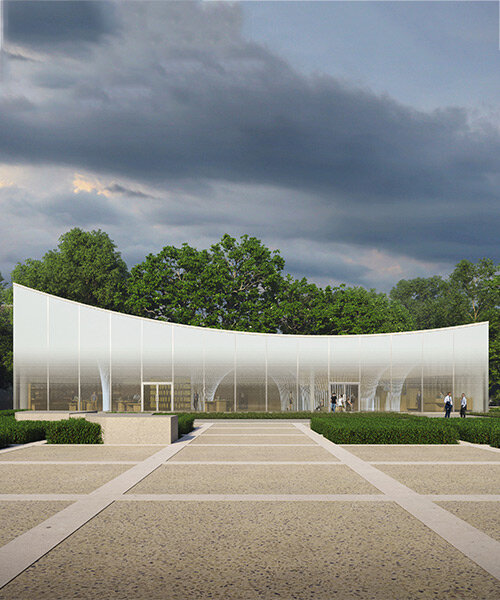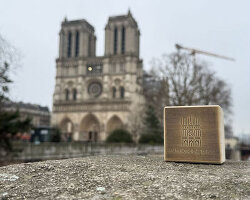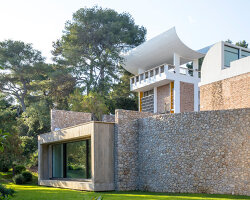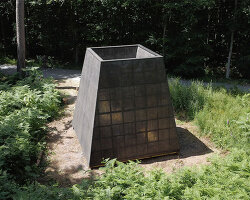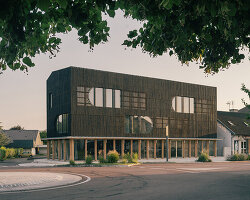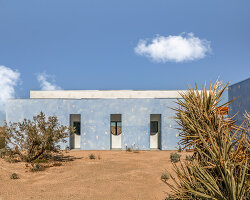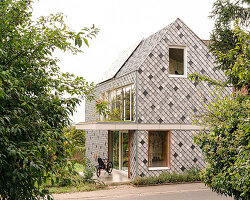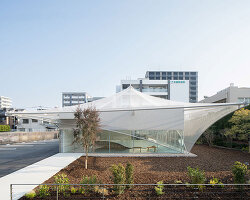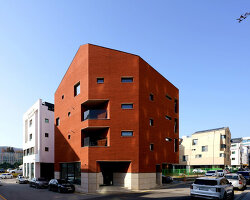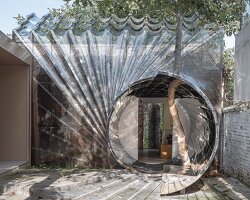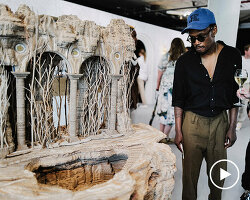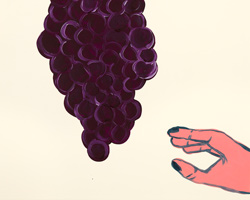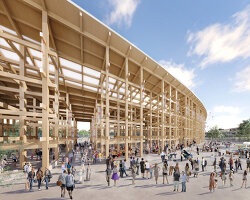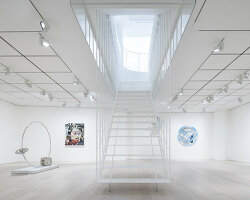Nicolas Ruinart Pavilion by Sou Fujimoto
Japanese architect Sou Fujimoto has designed ‘Nicolas Ruinart Pavilion’, a new visitor center for Ruinart, the oldest champagne house in Reims, France. The 1,400 sqm contemporary building features natural stone and wood, and is clad in a gradient glass façade topped by a curved roof. The new project is located on a site steeped in history and is set in relation to the pre-existing historic buildings to combine tradition and modernity. Cultural spaces are created between the new and old structures, including an artist’s garden that serves as a sanctuary for biodiversity and creative expression, while offering a variety of experiences related to champagne.
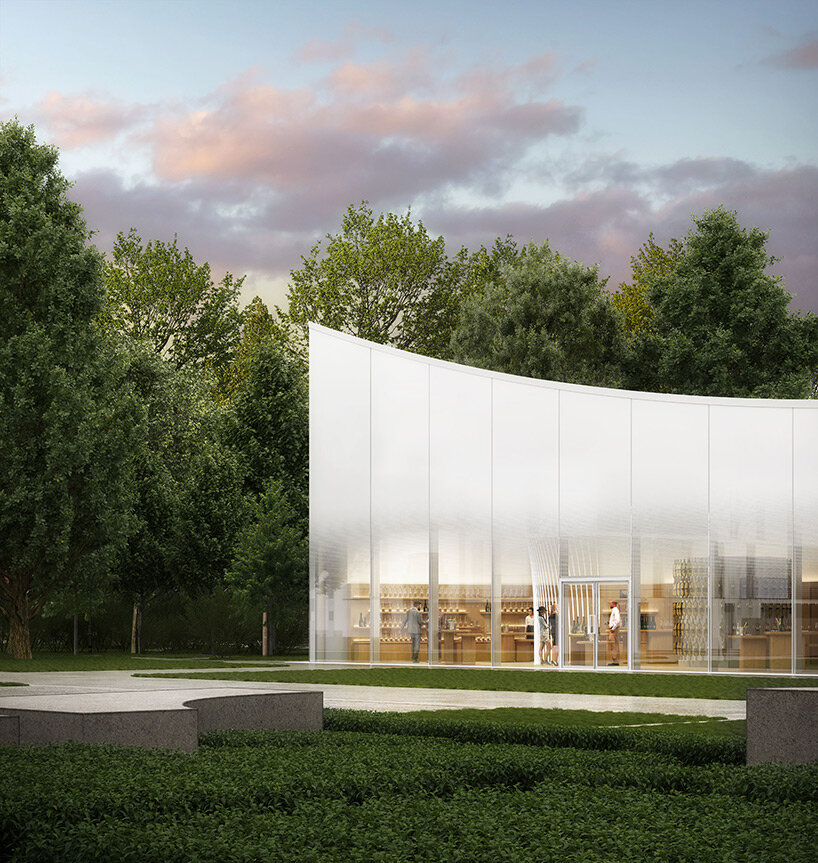
the pavilion is clad in a gradient glass façade topped by a curved roof | all images courtesy of Sou Fujimoto
Drawing inspiration from champagne bubbles
At the heart of the site, the pavilion by Sou Fujimoto (find more here) will house Maison Ruinart’s new reception area. The building is characterized by brightness, simplicity and modernity, and is conceived as a contemporary vision that contrasts with and reflects the adjacent historic buildings. The architect and his Parisian team designed a shape inspired by the Ruinart bottle and the curve of a champagne bubble.
Built of natural limestone from a regional quarry, the pavilion pays homage to the chalk pits of Reims, which were themselves used as quarries. The entrance hall highlights the contrast between a dark, narrow area – the connecting paths between the chalk pits – and a large opening to a vast, light-filled space. The visitor enters a wide open plateau with a sweeping view of the grounds, the main courtyard, and the historic buildings. In this bright, open space, it’s easy to move between the different experience areas, from the lounges to the champagne bar and store to the terrace.
‘This luminous, light and transparent building is designed to welcome visitors as if in a jewel box. It embodies Maison Ruinart, as both the heir to ancient history – represented by the white limestone of the building’s framework – and an innovative vision, like the slender, uplifted shape of the roof.’ shares Sou Fujimoto.
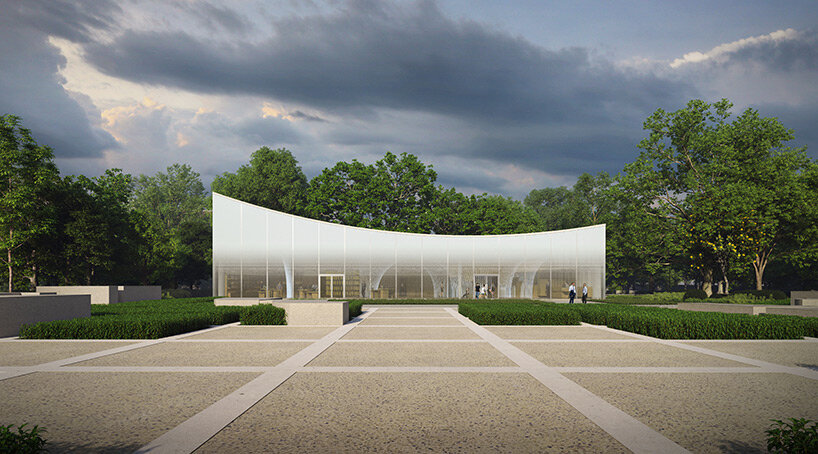
focusing on ecological responsibility
The Nicolas Ruinart Pavilion is located on a 7,000 sqm site, including 5000 sqm of protected forest, which has been completely redesigned. From the street, visitors can walk along a tree-lined path that includes mineral elements reminiscent of the chalk pits deep underground. Designed by landscape architect Christophe Gautrand (find more here), the site is an artistic experience in itself and opens a dialogue between the 19th-century façades and the modernity of the pavilion, creating a link between the underground world of the chalk pits and the luminous white stone walls. The visitor can move freely and discover nature in all its diversity: Wooded areas, vines and vegetable gardens. Each plant has been carefully selected to anticipate climate change and promote biodiversity.
In line with an ecologically responsible approach, the simple structure is made of natural materials -stone for the walls and wood for the framework- carefully selected in the region. Insulation is made of organically grown materials, a green roof cools the building, screen-printed glazing absorbs the sun’s rays, geothermal energy regulates the temperature, and rainwater is collected. Located in the middle of the wooded area, this building is more sophisticated than imposing. The white façades play with light and are influenced by subtle changes in the natural environment throughout the day, seasons, and weather.
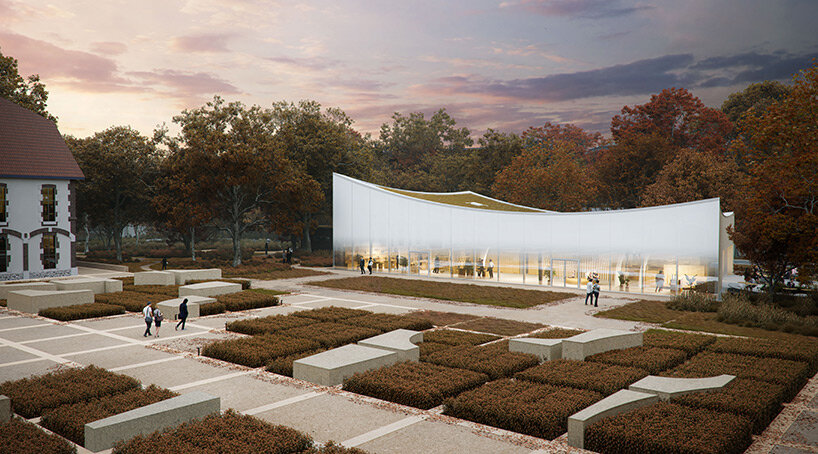
project info:
name: Nicolas Ruinart Pavilion
architect: Sou Fujimoto | @sou_fujimoto
location: Reims, France
